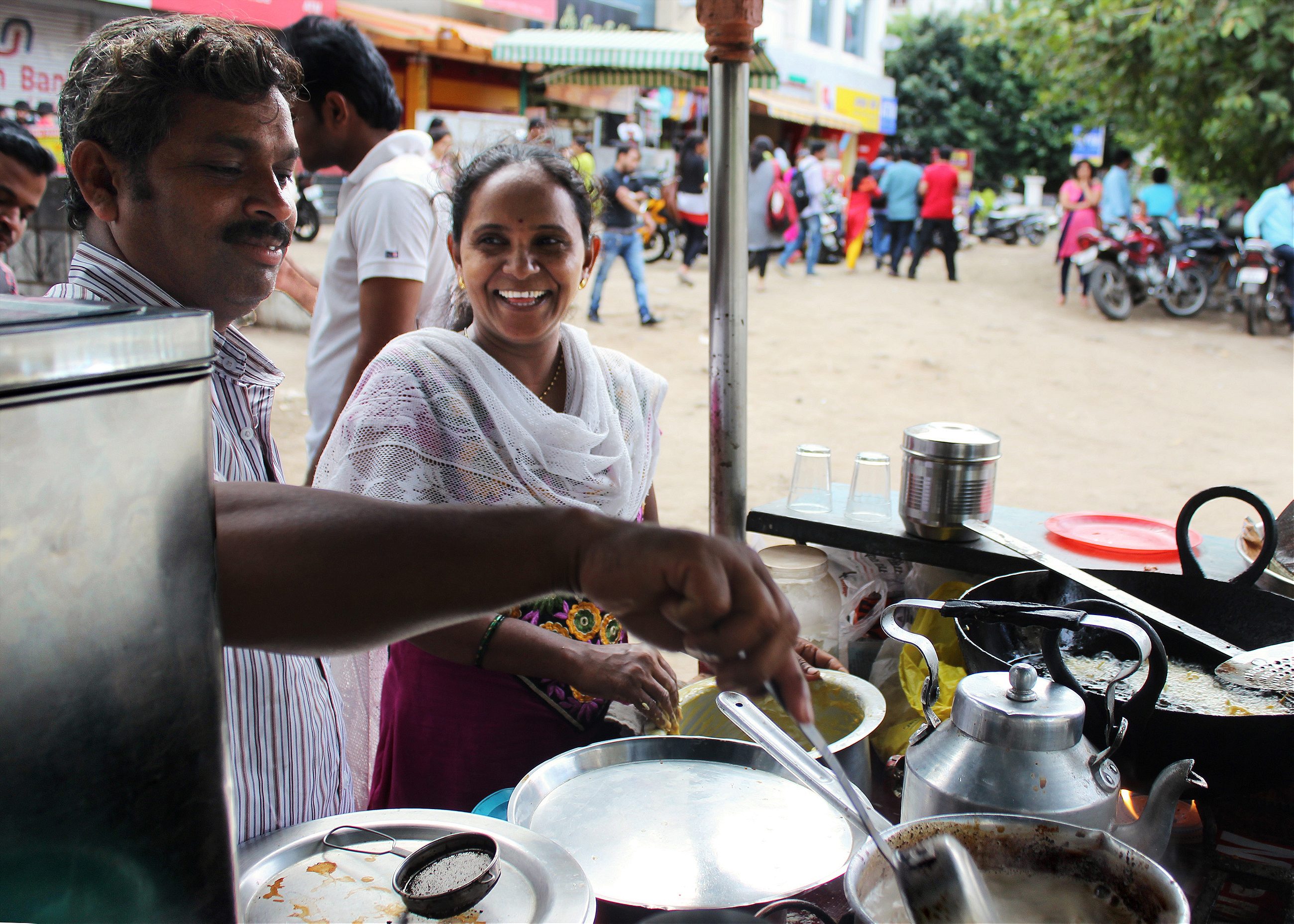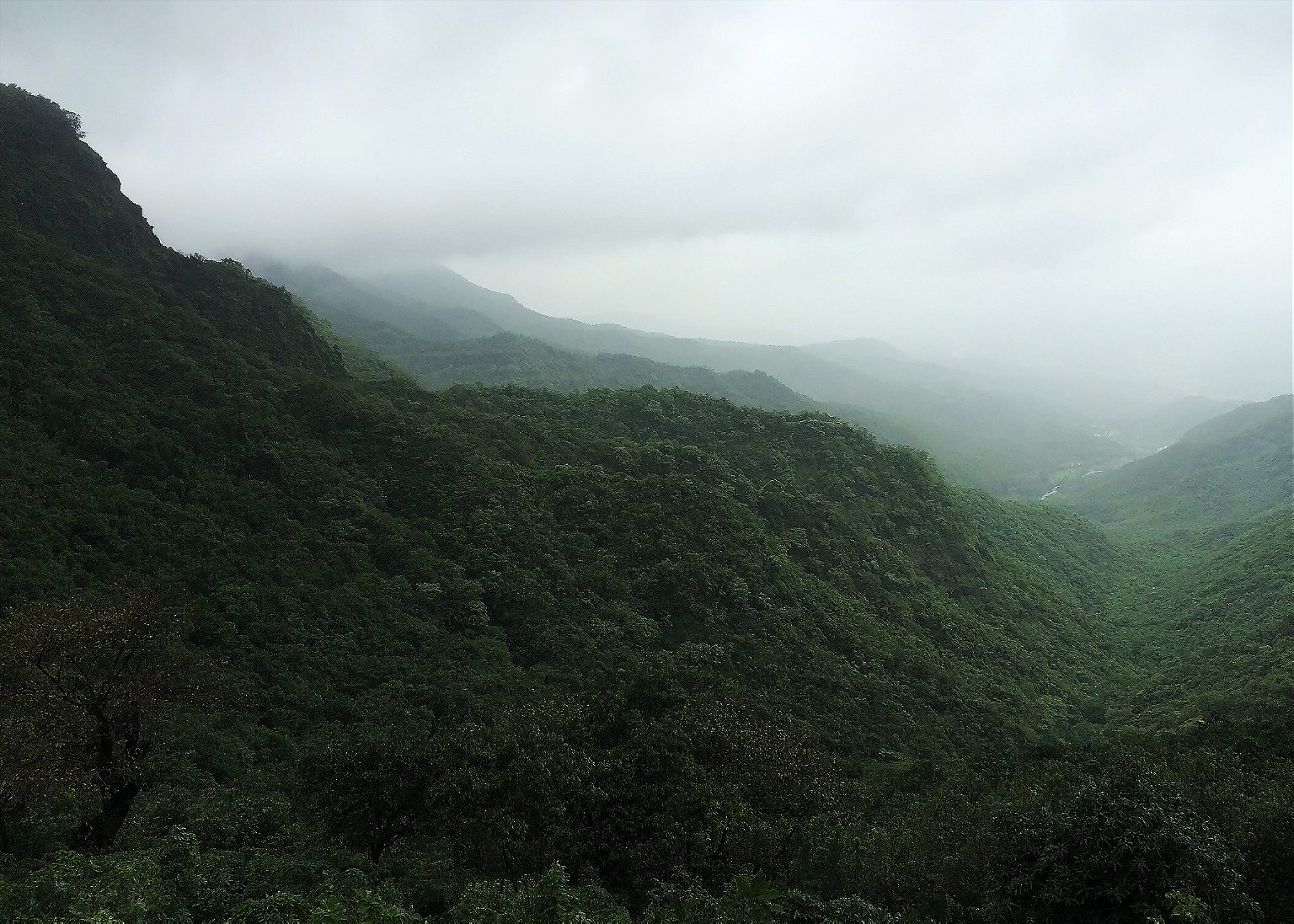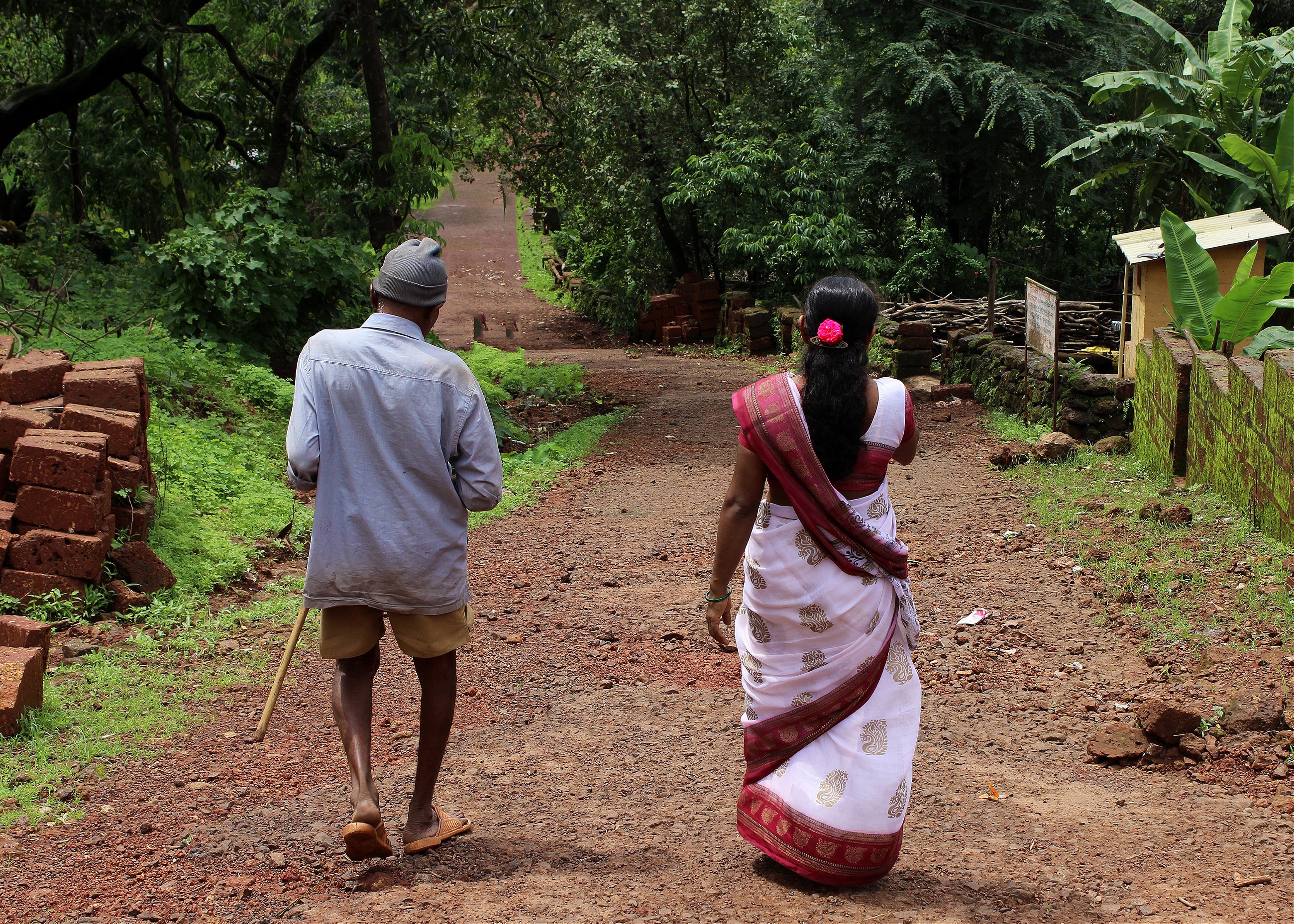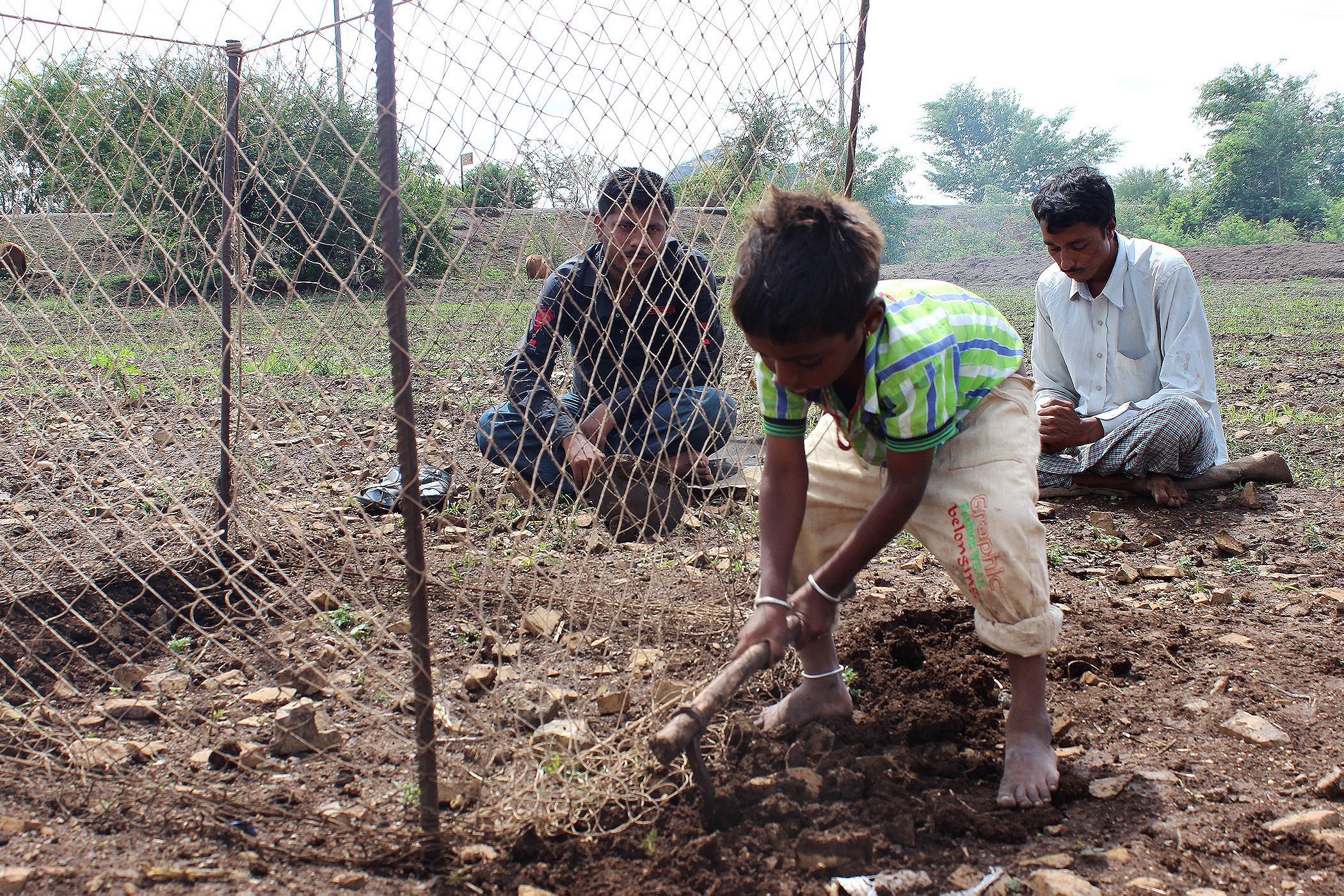For one woman living in Mumbai, life in a rural village is not just an idyllic past, but a vital part of her future.
While training with a veterinary sciences group in Pune—the second-largest city in the Indian state of Maharashtra—I often accompanied a woman named Sangeeta, a livestock health worker, on her rounds, visiting different farmers and shepherds who would call with health-related queries and problems. One such day, we bumped our way through the Western Ghats mountain range on city buses, auto-rickshaws, and even a children’s school bus. We administered surveys, took notes, and provided medicines. Day became dusk as we drank sugary cups of chai made with raw milk and had long conversations on illness and injury, exotic animal breeds, and the recent rains that had punctuated the unrelenting drought.
We returned to the city pleasantly fatigued and with growling stomachs. Sangeeta told me that she was not only an animal health worker, but also a vada pav vendor. She got to work alongside her husband, Vilas, behind the grill of their food stall, moving with the reflexes of an expert, frying up pakora-like bhaji and vadas to perfection and with lightning speed. I was sitting on an upturned bucket when she came and perched next to me with heaping plates of food. “Eat!” she genially ordered me, and then pointed to the sauces with a smile and noted: “Those are my chutneys.”
Different regions in India boast specialty street foods. In Pune, as in neighboring Mumbai, it is vada pav: a fried ball of spiced and battered mashed potato on a bun that is reminiscent in size, softness, and color of a classic American dinner roll. Every bite bursts with the spice of salted green chilies and the tang of multiple chutneys. Different chutneys might include roasted peanuts, sesame seeds, coconut, garlic, chilies, coriander, and mint in different variations.
Sangeeta’s chutneys were excellent. A few weeks later, I learned what made these sauces so particularly “hers.” Partially, it’s her recipe: she adds a little of the previous day’s bhaji—fritters—to her dry garlic chutney to enhance its richness. But their secret also lies in their provenance.

Sangeeta was born in the late 1970s in the farming village of Tarval on the western coast of India in the lush district of Ratnagiri. Tarval is 180 miles from Mumbai, a significant but not impossible distance to travel regularly. She discovered at a young age that city-dwellers would pay top dollar for goods from Tarval. “When I was a little girl,” she tells me, “I learned to make torans (door embellishments). To buy the thread to make these torans, I had to travel through Ratnagiri. To sell them, I had to travel to Mumbai. That was when I learned about bus routes, traffic, and travel.”
As she got older, Sangeeta’s knowledge of these travel routes made her an important person to the women in her village, as she would escort the sick and the pregnant to the local hospital, which was 18 miles away. When the Indian NGO, Anthra, which trains women in holistic livestock care, began operating in Tarval in 1998, her standing and knowledge of the area snagged her a leadership position with the group and she began her career as an animal health worker. However, in order to receive the training she needed, she had to leave Tarval for Mumbai. “My mother wasn’t keen on me leaving but whenever cattle in the village would fall sick, we would have to call a doctor,” Sangeeta says. “My neighbors told my mother to let me go and learn.”
Sangeeta invited me to join her on a journey back to her hometown. It was during the monsoon months, from June to October—when travel can be difficult because of flooding and mudslides. On a good day, a luxury bus might take 11 hours, but in the middle of the rainy season, you might not make it to your destination at all. After Sangeeta and I deliberated for weeks on the best way to make the journey, our organization offered to hire us a car providing we would carry out some research while we were there. Sangeeta flashed me a smile that suggested she might have known what she was up to. Off we went, travelling in luxury.

We arrived in Tarval during the rice-transplanting phase of the monsoon season. To transplant rice requires bending at the waist while knee-deep in water and walking backwards at the same time as bobbing up and down with a large handful of harvested rice seedlings. With each bob, five to eight seedlings are pulled from a bunch and replanted by thrusting the cluster into the muddy floor of the waters. Any romantic notions that the verdant greens of Tarval might have sown in my mind were quickly abandoned as I worked my way through the punishing rhythms of the transplant.
After our work was done, Sangeeta took me to see an enormous basket of overflowing chilies that were turning from green to red. With no small measure of excitement, she explained: “My chutneys! The red ones are good for chutney, the green ones for cooking. I grow my own and I use them both for my vada pav.”
Most reports on urbanization cite the huge number of rural people leaving the country for the city. Sangeeta, however, has neither entirely relocated to the city nor remained in her village. She maintains ties and agricultural land in Tarval and uses those resources to fuel her urban business.
For Sangeeta, village life is not tenable on its own but it still plays an important role in her work in the city. Mobility functions as a general strategy for managing the ups and downs of life on the edge. As a kind of strategic inconsistency, it is a well-suited to the precariousness that is endemic to life in spaces of variability and unpredictable scarcity.
When in the city, Sangeeta lives in a relatively quiet corner of a parking garage attached to an apartment complex that is a couple minutes walk from where her vada pav stand is located. A portion of the space has been converted into an enclosed area for cooking and washing, while beds and chairs spill into a more open space that invites visitors to linger while Sangeeta cooks, jokes with her daughters, and watches television. Often, in the materially spare but socially rich space of her “open-concept” home, and sometimes under the dour gaze of a landlord ensuring no one is cooking meat, Sangeeta simultaneously preps her family’s dinner and ingredients for the next day’s vada pav. The wealth of chilies from Tarval, meanwhile, are hidden away and informally guarded by their semi-stray dog, Chikki.

Sangeeta’s mobility brings her into contact with other groups who use similar tactics to live vitally, if marginally. Much of her practice as an animal health worker, for instance, is with pastoralists who require approaches to animal health care that are more versatile and improvisational than the fixed network of veterinarians, pharmacies, and clinics often used by settled farmers. In this capacity, Sangeeta often works with Dhangar groups, the semi-nomadic shepherds of Maharashtra. Socially—and physically—on the margins of Maharashtrian society, Dhangar families temporarily live on the lands of settled farmers and take half of what is harvested in exchange for their labor in cultivating crops. During the monsoon months, they return to their villages.
Transitory living creates problems around schooling, immunizations, and other social services because for most of the year, Dhangar groups do not live in the regions in which they have access to these entitlements. At the same time, however, it allows for adaptability in the face of drought, crop loss, and a dearth of farm labor opportunities: all issues that have immense impact on contemporary rural India, and have contributed to an epidemic of suicides in the farming community. This adaptability also allows unlikely alliances to take root.
On one particularly gray day, Sangeeta received a call on her black Nokia cellphone from Bindhu, a Dhangar man whose family—his wife, Anita, their four children, and his parents—was living on the outskirts of Pune. Bindhu was ill and needed help; although she is trained to work with livestock, she also sometimes provides health advice for the people who tend them as well.
We drove for a few hours until Sangeeta motioned to pull over beside a desiccated riverbank. Off in the distance, a small group of people, temporary shelters made of wood and tarp, and enclosures holding hundreds of sheep were visible. We walked across the field to find Bindhu prostrate while Anita and her daughters were busy building small enclosures for the lambs of the herd. The three of us sat on worn blankets while Sangeeta briskly asked Bindhu questions and handed over some medicine.

Shortly after our arrival, a new issue arose. Bindhu’s father, Mukesh, returned from an errand and greeted Sangeeta warmly. Talk quickly shifted from Bindhu’s injuries to onions as he escorted us to the storehouses of their produce. Filling every corner of a large shelter made of wooden slats, Mukesh had many onions. But not so many, it turned out, as to agree to the price Sangeeta offered him. “This price you offer is too low!” he protested. “Na baba,” Sangeeta coolly rejoined, “the price you ask is too high.”
Unable to agree to disagree, the three of us piled into the car Sangeeta and I had hired for the day to check onion prices at the local market. Perhaps here it could be determined who ought to pay what. We came upon a large concrete complex adorned with different vendor signs. I hung back while Mukesh and Sangeeta spoke with suppliers. Perhaps one was amicably proven right, or perhaps their side-by-side approach to different sellers provided them with a common enemy; either way, Sangeeta and Mukesh both returned smiling with large bags of onions and potatoes as their respective hauls. It would seem they both found a deal they wanted and harbored each other no ill will.
We dropped Mukesh off and carried on our way, back the city and the vada pav stand, onions and potatoes in tow.
